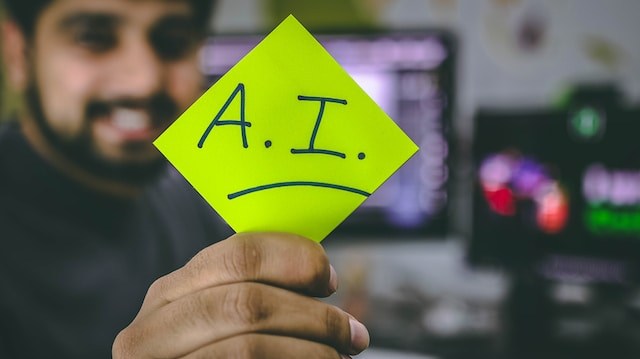AI-Driven Mobile Eye Exams revolutionize the way we approach vision care. With advanced technology at its core, these exams utilize artificial intelligence to provide accurate and efficient diagnoses. Gone are the days of lengthy appointments and cumbersome equipment. Now, individuals can simply use their smartphones to undergo comprehensive eye exams from the comfort of their own homes.
This innovative solution combines the power of AI algorithms with mobile devices, enabling users to seamlessly capture high-quality images of their eyes. These images are then analyzed in real-time, allowing for instant detection of potential vision issues. By leveraging the convenience and ubiquity of mobile technology, AI-Driven Mobile Eye Exams make vision care accessible to a broader audience.
With the ability to accurately identify common eye conditions and track changes over time, this technology empowers individuals to take control of their eye health. By eliminating barriers to traditional eye exams, AI-Driven Mobile Eye Exams represent a significant step forward in preventive healthcare. So, why wait? Embrace the future of vision care and experience the convenience and accuracy of AI-Driven Mobile Eye Exams today.
The Rise of AI-Driven Mobile Eye Exams
Did you know that artificial intelligence (AI) is transforming the way we undergo eye exams? With the advent of AI-driven mobile eye exams, revolutionizing eye care has become a reality.
Traditionally, eye exams required a visit to the optometrist's office. But with AI technology, you can now have your eyes tested wherever you are, using just your smartphone. This breakthrough in eye care is making it more convenient for people to monitor their eye health regularly.

AI-driven mobile eye exams work by using advanced algorithms to analyze images of the eye taken with a smartphone camera. These algorithms can detect early signs of eye conditions such as glaucoma, macular degeneration, and diabetic retinopathy. By catching these conditions early, patients have a better chance of receiving timely treatment and preventing further vision loss.
Moreover, AI-driven mobile eye exams provide a cost-effective solution, especially for underserved areas with limited access to eye care professionals. With just a smartphone and an internet connection, individuals can have their eyes screened, reducing the barriers to eye care.
The rise of AI-driven mobile eye exams is revolutionizing eye care by making it more convenient, accessible, and affordable. With the power of AI, we can now take an active role in monitoring our eye health and detecting potential issues early on. So, why wait? Take advantage of this groundbreaking technology and ensure the well-being of your eyes.
→ Revitalizing Your Metabolism After Weight Loss: Effective Strategies and Advantages
How AI Enhances Accuracy and Efficiency
AI technology is revolutionizing the field of eye care by enhancing the accuracy and efficiency of mobile eye exams. With the power of AI-driven algorithms, eye care professionals can now provide more accurate diagnoses and personalized treatment plans.
By leveraging AI, mobile eye exams can detect a wide range of eye conditions, including glaucoma, macular degeneration, and diabetic retinopathy, with higher accuracy than traditional methods. The algorithms analyze digital images of the eye, identifying patterns and abnormalities that may indicate the presence of a condition. This allows for early detection and intervention, leading to better patient outcomes.

Moreover, AI-driven mobile eye exams streamline the entire process, making it faster and more efficient. Patients no longer need to schedule appointments or travel to clinics. Instead, they can conveniently perform the exam at home using a smartphone or tablet. The AI algorithms analyze the captured images in real-time, providing instant results and recommendations to the patient.
In addition to improving accuracy and efficiency, AI-powered mobile eye exams also have the potential to reach underserved populations. By eliminating geographical barriers and reducing costs, AI-driven eye exams can bring quality eye care to remote areas and low-income communities.
The integration of AI technology in mobile eye exams is transforming the field of eye care. It enables more accurate diagnoses, personalized treatment plans, and increased accessibility to quality eye care. AI is revolutionizing eye care, improving accuracy and efficiency for a brighter future of visual health.
→ The Benefits and Risks of Eating an Orange Every Day
The Benefits of AI-Driven Mobile Eye Exams
Imagine being able to get a comprehensive eye exam from the comfort of your own home, without the need for an appointment or a trip to the optometrist. Thanks to advancements in artificial intelligence (AI), this is now possible with mobile eye exams.
With AI-driven mobile eye exams, you can use your smartphone or tablet to assess your vision and screen for various eye conditions. This technology uses sophisticated algorithms to analyze images of your eyes, providing accurate and reliable results.
One of the key benefits of AI-driven mobile eye exams is convenience. You no longer have to take time out of your busy schedule to visit an eye care professional. Instead, you can simply download an app, follow the instructions, and receive your results within minutes. This is particularly beneficial for those who live in remote areas or have difficulty accessing traditional eye care services.

Another advantage is cost-effectiveness. Mobile eye exams are often more affordable compared to in-person visits, making them a viable option for individuals on a budget. Moreover, early detection of eye conditions through mobile exams can help prevent further complications and potentially save on long-term healthcare costs.
In addition, AI-driven mobile eye exams provide privacy and comfort. You can conduct the exam in a familiar environment, avoiding the potential discomfort or anxiety that can arise from visiting a clinic. The results are securely stored within the app, allowing you to track changes in your vision over time.
By revolutionizing eye care, AI-driven mobile eye exams offer a convenient, cost-effective, and private way to monitor your eye health. With this technology, you can take proactive steps towards maintaining optimal vision and overall well-being.
→ Transforming Mental Health Care: AI's Role in Enhancing Deep Brain Stimulation
Addressing Concerns: Advantages and Disadvantages
The power of AI-driven mobile eye exams has revolutionized the field of eye care, providing both advantages and disadvantages. One of the main advantages is the accessibility it offers. With AI-driven mobile eye exams, individuals can conveniently assess their eye health from the comfort of their own homes. This is particularly beneficial for those who live in remote areas or have difficulty accessing traditional eye care services.
Another advantage is the efficiency of AI-driven mobile eye exams. By utilizing artificial intelligence, these exams can quickly analyze images of the eye and detect potential issues. This saves time for both patients and healthcare professionals, allowing for faster diagnoses and treatment.
There are also some disadvantages to consider. One concern is the accuracy of AI-driven exams compared to traditional in-person exams. While AI technology has made significant advancements, it may not always be as accurate as a trained eye care professional. The lack of human interaction during these exams may result in missed opportunities for personalized care and follow-up.
The power of AI-driven mobile eye exams brings convenience and efficiency to the field of eye care. It is important to weigh the advantages and disadvantages and consider the potential limitations of relying solely on AI for eye health assessments.
"While AI-driven mobile eye exams offer convenience, it's crucial to remember the importance of human interaction and personalized care in eye health."
Practical Steps for Conducting AI-Driven Mobile Eye Exams
AI technology has revolutionized the field of eye care, particularly in the realm of mobile eye exams. Conducting these exams efficiently and effectively requires a careful approach.
- Preparing the patient: Begin by explaining the purpose and process of the exam to the patient. Put them at ease and address any concerns they may have.
- Collecting patient data: Utilize AI-powered mobile apps to gather relevant patient data. This can include personal information, medical history, and current symptoms. Ensure the privacy and security of this data.
- Conducting the exam: Utilize AI algorithms to guide the examination process. This can involve capturing images or videos of the patient's eye and analyzing them for potential issues.
- Interpreting the results: AI algorithms can provide instant analysis of the collected data. Use this information to identify any abnormalities or potential eye conditions.
- Providing recommendations: Based on the exam results, offer personalized recommendations to the patient. This can include lifestyle changes, further testing, or referral to a specialist.
- Follow-up and monitoring: Keep track of the patient's progress and provide ongoing support. AI technology can aid in monitoring changes in the patient's eye health over time.
By following these practical steps, healthcare professionals can effectively conduct AI-driven mobile eye exams and revolutionize eye care. This technology has the potential to greatly improve accessibility and efficiency in diagnosing and treating eye conditions. Embracing these advancements can lead to better patient outcomes and a more comprehensive approach to eye care.
Recommendations for Implementing AI in Eye Care
Artificial Intelligence (AI) has the potential to revolutionize eye care through the power of AI-driven mobile eye exams. Here are some recommendations for implementing AI in this field.
Enhancing Diagnostic Accuracy
AI can greatly improve the accuracy of eye disease diagnosis. By training AI algorithms on vast amounts of data, it can detect subtle changes in the eye that may indicate the presence of diseases like glaucoma, macular degeneration, or diabetic retinopathy. Implementing AI in eye care can help identify these conditions at an early stage, allowing for timely treatment and preventing further vision loss.
Improving Accessibility to Eye Care
AI-driven mobile eye exams can bring eye care to remote and underserved areas. By utilizing smartphones or portable devices equipped with AI algorithms, individuals can perform basic eye exams at home or in community centers. AI can analyze the results and recommend further actions, such as scheduling an appointment with an eye care professional if abnormalities are detected.
This approach can bridge the gap in access to eye care services, particularly for those who have limited resources or live in rural areas.
Enhancing Efficiency in Eye Care Facilities
Implementing AI in eye care facilities can streamline the diagnostic process and improve overall efficiency. AI algorithms can automate image analysis, reducing the time and effort required for manual examination. This allows eye care professionals to focus more on patient care and treatment decisions, leading to better outcomes and increased patient satisfaction.
The integration of AI in eye care has the potential to significantly improve diagnostic accuracy, enhance accessibility to eye care services, and increase efficiency in eye care facilities. By embracing this technology, we can revolutionize the way eye care is delivered, ultimately leading to better vision health for all.
The Future of AI in Eye Exams
AI-driven mobile eye exams have the power to revolutionize eye care. With advancements in technology, the future of eye exams is set to become more accessible and efficient than ever before.
By harnessing the capabilities of artificial intelligence, eye exams can be conducted remotely, eliminating the need for in-person visits to the ophthalmologist. This not only saves time but also reduces the burden on healthcare systems, particularly in rural areas where access to eye care is limited.
AI algorithms can analyze images of the eye to detect various eye conditions, such as glaucoma, macular degeneration, and diabetic retinopathy. By accurately identifying these conditions at an early stage, patients can receive timely treatment, preventing further vision loss.
Moreover, AI-driven eye exams can provide personalized recommendations for eye care based on an individual's unique needs. This tailored approach ensures that patients receive the most effective treatment plans, optimizing their visual outcomes.
As technology continues to advance, AI in eye exams holds the potential to enhance the accuracy, accessibility, and efficiency of eye care. With the power of AI, we can look forward to a future where everyone has access to high-quality eye exams, leading to better overall vision health.
With all this in mind
In conclusion, AI-driven mobile eye exams represent a groundbreaking innovation in the field of eye care. With the power of AI, these exams offer unprecedented accuracy, efficiency, and convenience. The benefits are undeniable, from early detection of eye diseases to increased accessibility for underserved populations. While there are concerns to address and challenges to overcome, the future of AI in eye exams is bright.
As technology continues to advance, we can expect even more sophisticated AI algorithms and improved patient outcomes. Embracing AI-driven mobile eye exams is a crucial step towards revolutionizing eye care and ensuring a healthier future for all.
Key Takeaways
- AI-driven mobile eye exams are transforming the field of eye care, offering a convenient and accurate alternative to traditional in-person exams.
- By leveraging AI technology, these exams enhance accuracy and efficiency, leading to early detection of eye diseases and improved patient outcomes.
- The benefits of AI-driven mobile eye exams include increased accessibility, cost-effectiveness, and the ability to reach underserved populations.
Frequently Asked Questions
How do AI-driven mobile eye exams work?
AI-driven mobile eye exams utilize smartphone cameras and advanced algorithms to capture and analyze images of the eye. These algorithms can detect abnormalities, signs of disease, and provide insights into overall eye health.
What are the advantages of AI in eye care?
AI in eye care offers several advantages, including improved accuracy, faster diagnosis, increased accessibility, and the ability to reach remote and underserved populations.
Are there any disadvantages to AI-driven mobile eye exams?
While AI-driven mobile eye exams have numerous benefits, there are also concerns to address. These include privacy and data security, potential bias in algorithms, and the need for human oversight to ensure accurate diagnoses.
